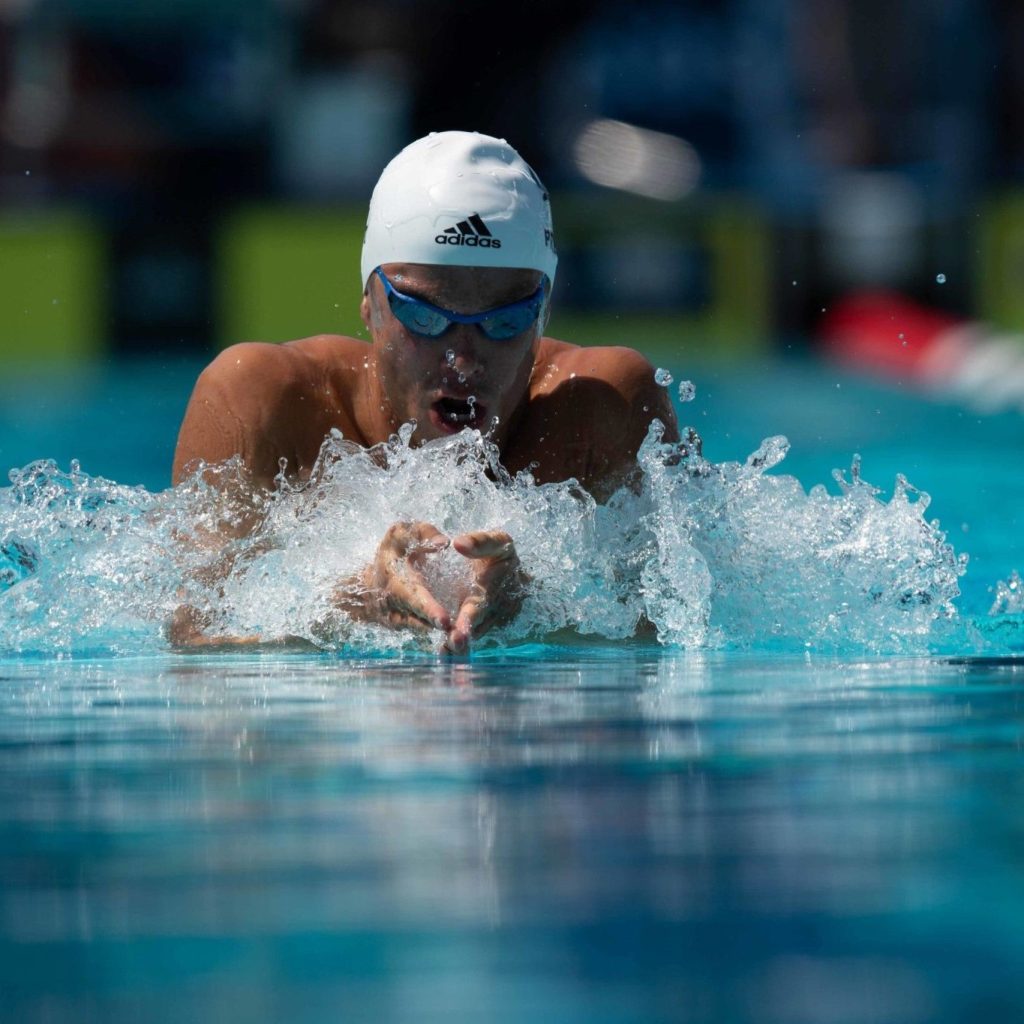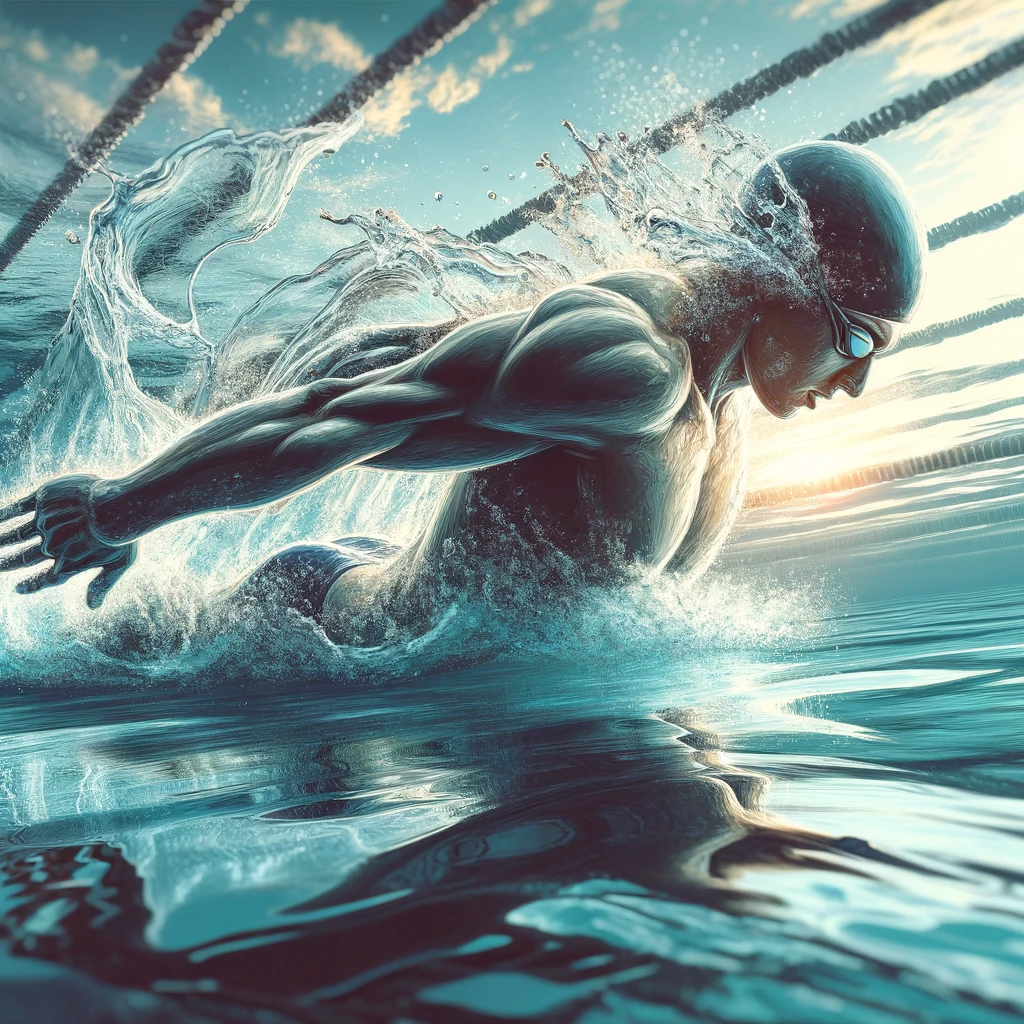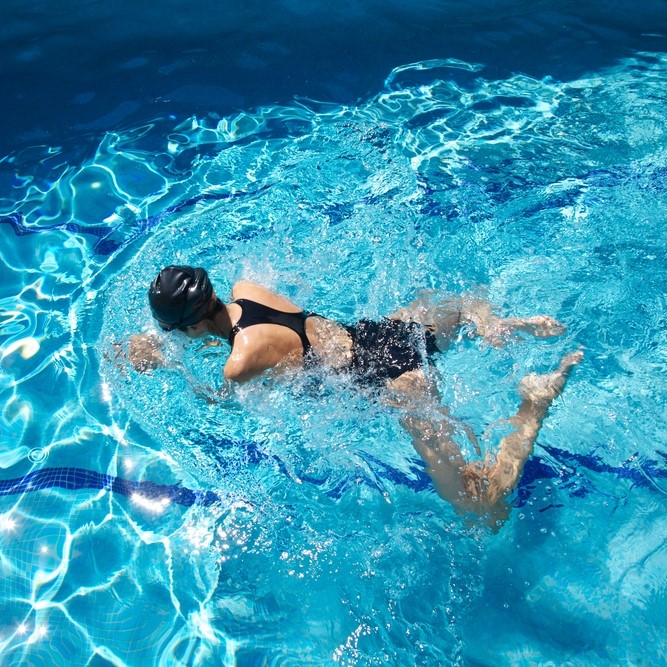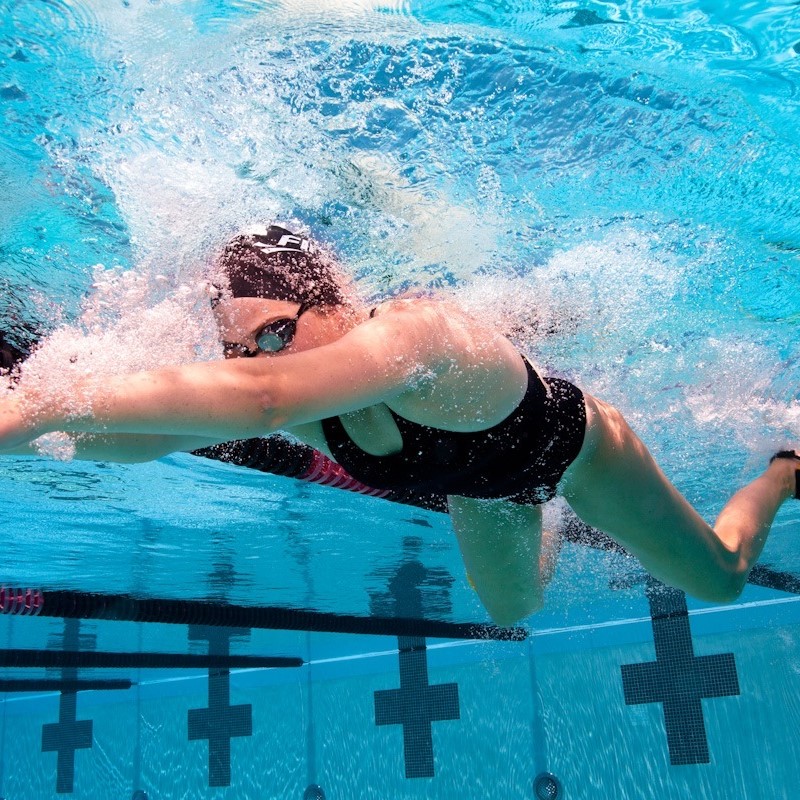Introduction
Breast stroke swimming is one of the most popular and accessible swimming styles, especially for beginners. Unlike other strokes that require continuous motion, breast stroke swimming allows for a more rhythmic and controlled pace. This makes it ideal for those new to the pool, recovering from injury, or looking for a low-impact full-body workout. The stroke involves a simultaneous arm pull and frog-like kick, followed by a glide phase that helps conserve energy. Because of its unique timing and form, mastering breast stroke swimming basics for beginners can improve breathing control, build endurance, and enhance overall water confidence. In this article, we’ll explore the mechanics of the stroke, break down each phase, and provide practical tips to help swimmers of all levels improve. Whether you’re training for fitness or preparing for a swim meet, understanding breast stroke swimming is a valuable step toward aquatic success.
 The Four Phases of BreastStroke Swimming
The Four Phases of BreastStroke Swimming
The Pull Phase
The pull phase begins when the swimmer extends their arms forward in a streamlined position. From there, they sweep the hands outward and downward in a wide arc. This motion pushes water backward, creating forward propulsion.
Swimmers should keep their elbows high during the pull. This increases the surface area of the forearms, generating more power. At the same time, hands stay slightly cupped to maximize water resistance.
As the arms move outward, the chest rises slightly. This natural lift helps with breathing. However, lifting the head too high can disrupt body alignment.
Once the hands reach shoulder width, the pull transitions into the next phase. The goal is to complete the motion smoothly, without jerking or pausing.
Timing is essential. A rushed pull reduces efficiency. A slow one loses momentum. Therefore, swimmers must find a balanced rhythm.
Additionally, the pull should not go past the shoulders. Crossing into the chest area creates drag. It also makes recovery harder.
By focusing on clean, controlled movements, swimmers gain more speed with less effort. This sets the foundation for the rest of the stroke.
The Breathe and Recovery Phase
After the pull, the swimmer lifts their head to take a breath. This happens naturally as the upper body rises. The mouth clears the water just enough to inhale quickly.
Breathing should be short and efficient. Long pauses disrupt the stroke’s rhythm. Exhale slowly through the nose while the face is in the water.
Once the breath is taken, the arms begin to recover. They move forward in a straight line, returning to the starting position. The hands stay close together, just below the surface.
During this phase, the head drops back into the water. The face submerges before the arms fully extend. This keeps the body streamlined.
Coordination is key. The breath, arm recovery, and head movement must happen in sequence. Any misstep can throw off balance.
Some swimmers make the mistake of lifting too high. This causes the hips to drop. As a result, drag increases and speed decreases.
To avoid this, practice breathing low and quick. Use a mirror or video feedback to check form.
With consistent practice, the breathe and recovery phase becomes automatic. It flows naturally from the pull into the next stage.
The Kick Phase
The kick in breast stroke swimming mimics a frog’s leg motion. It begins after the arms have started to recover. The legs bend at the knees and hips, drawing toward the body.
Feet should turn outward during the bend. This positioning allows for a powerful outward and backward push. The soles of the feet face behind, not upward.
Then, the legs snap outward and back in a sweeping motion. This generates the main source of forward thrust. The faster and wider the kick, the more propulsion.
However, over-kicking can waste energy. Swimmers should aim for a balanced, compact motion. Maximum power comes from proper technique, not size.
After the kick, the legs extend fully. They come together in a streamlined position. This reduces drag and prepares for the glide.
Timing matters. The kick must follow the arm recovery. If it happens too early or late, the stroke loses efficiency.
Practicing kicks with a kickboard helps isolate the movement. It builds strength and muscle memory.
As a result, the kick becomes more effective. It drives the body forward with less effort.
The Glide Phase
The glide phase is what sets breast stroke swimming apart from other strokes. After the kick, the body stays in a straight, horizontal position. It coasts forward with minimal resistance.
This phase allows swimmers to rest briefly. It conserves energy between strokes. At the same time, it maintains momentum.
To maximize glide, the body must be fully extended. Arms are locked forward. Legs are pressed together. Fingers point ahead.
The head stays in line with the spine. Looking down keeps the hips high. This prevents the lower body from sinking.
A long glide improves efficiency. It reduces the number of strokes needed per lap. This is especially helpful in longer distances.
However, some swimmers shorten the glide too much. They rush into the next pull. This increases fatigue and slows overall pace.
To develop a strong glide, practice holding the position for 1–2 seconds. Use drills like “one-stroke, one-glide” to build rhythm.
Over time, the glide becomes a natural part of the stroke. It enhances speed and reduces strain.
 Why BreastStroke Swimming Is Ideal for Beginners and Rehab
Why BreastStroke Swimming Is Ideal for Beginners and Rehab
Low Impact on Joints
One of the biggest advantages of breast stroke swimming is its gentle effect on the body. The movements are smooth and controlled. There is no sudden impact or jarring motion.
This makes it perfect for people with joint pain, arthritis, or recovering from surgery. The water supports the body, reducing stress on knees, hips, and shoulders.
Additionally, the stroke does not require deep bending or twisting. The range of motion is moderate and natural.
Many physical therapists recommend breast stroke swimming for rehabilitation. It helps rebuild strength without risking further injury.
Even older adults find it accessible. The ability to pause between strokes allows for self-paced progress.
Because of its low-impact nature, swimmers can train longer without discomfort. This leads to better consistency and faster recovery.
Therefore, breast stroke swimming is not just a technique. It’s a therapeutic tool that promotes healing and mobility.
Builds Confidence in the Water
New swimmers often feel anxious about breathing and staying afloat. Breast stroke swimming addresses both concerns effectively.
The stroke keeps the face above water during the breath. Swimmers can see their surroundings. This reduces fear and increases control.
Also, the glide phase provides a moment of stability. It allows time to relax and refocus.
Many beginners start with breast stroke swimming because it feels safer. They can stop, stand, and catch their breath easily.
Instructors use it to teach core skills like floating, kicking, and coordination. These basics form the foundation for learning other strokes.
Moreover, the stroke’s symmetry makes it easier to learn. Both arms and legs move together. There is no complex timing.
As confidence grows, swimmers become more comfortable in deeper water. They begin to enjoy the freedom of swimming.
Thus, breast stroke swimming plays a crucial role in building water safety and self-assurance.
Improves Breathing and Lung Capacity
Breast stroke swimming encourages rhythmic, controlled breathing. The natural lift of the body makes inhaling easier. Swimmers don’t have to turn their heads sideways.
This consistent breathing pattern strengthens the diaphragm and lungs. Over time, lung capacity increases.
Controlled exhalation underwater also improves oxygen use. The body learns to manage air more efficiently.
For people with asthma or respiratory conditions, this can be highly beneficial. Many report fewer symptoms after regular swimming.
Additionally, the pause between breaths trains breath control. Swimmers learn to time their inhalation and exhalation precisely.
This skill transfers to other areas of life. It can reduce stress and improve focus.
Because of its breathing advantages, breast stroke swimming is often included in fitness programs for seniors and those with health concerns.
Therefore, it’s not just a physical workout. It’s a respiratory exercise that enhances overall well-being.
 Training Tips to Improve Your BreastStroke Swimming
Training Tips to Improve Your BreastStroke Swimming
Focus on Body Position and Alignment
Maintaining a horizontal body line is critical in breast stroke swimming. A dropped hip or raised head creates drag. This slows you down.
Keep your head in line with your spine. Look down during the glide. Lift only when it’s time to breathe.
Your chest should stay near the surface. Avoid diving too deep during the pull. This wastes energy.
Also, engage your core muscles. A tight core keeps the body stable. It prevents wobbling or twisting.
Practice floating on your front to feel the correct position. Then add small kicks and pulls.
Using a snorkel can help too. It allows you to focus on form without worrying about breathing.
With consistent attention to alignment, your stroke becomes more efficient. You’ll move faster with less effort.
Use Drills to Build Muscle Memory
Drills isolate specific parts of the stroke. They help correct mistakes and build proper technique.
For example, the “pull, breathe, kick, glide” drill breaks the stroke into steps. Swimmers practice each phase slowly.
Another effective drill is the “2-kick, 1-stroke” method. It emphasizes the glide and timing. Swimmers take two kicks for every arm pull.
Using a kickboard with breaststroke kick drills strengthens the legs. It also improves ankle flexibility.
Arm-only drills with a pull buoy help refine the pull and recovery. They reduce leg involvement, so you can focus on the upper body.
Consistent drill work leads to automatic movements. Over time, the correct form becomes second nature.
Therefore, don’t skip drills. They are essential for long-term improvement.
Increase Speed Without Sacrificing Form
Many swimmers try to go faster by increasing stroke count. However, this often leads to poor technique and fatigue.
Instead, focus on powerful, well-timed movements. A strong kick and clean pull generate more speed than rapid, sloppy motions.
Work on reducing glide time gradually. Shorten it just enough to maintain momentum. Avoid eliminating it completely.
Also, improve ankle flexibility. Flexible ankles create a larger surface area during the kick. This increases thrust.
Practice underwater dolphin kicks after push-offs. Though not part of the stroke, they build core power and streamline awareness.
Finally, time your laps. Track progress weekly. Small improvements add up over time.
By combining technique and pacing, you’ll swim faster while staying efficient.
 Frequently Asked Questions About BreastStroke Swimming
Frequently Asked Questions About BreastStroke Swimming
Q: Is breast stroke swimming the slowest stroke?
Yes, it is generally slower than freestyle or butterfly. However, it is more energy-efficient over long distances.
Q: Can I swim breast stroke in open water?
Yes, but it’s less common. The stroke works best in pools where visibility and space are controlled.
Q: Why do my hips sink during the stroke?
This usually happens when your head is too high or your kick is too wide. Focus on body alignment and compact movements.
Q: How can I improve my kick strength?
Use a kickboard for drills. Strengthen your legs with dryland exercises like squats and lunges.
Q: Should I breathe on every stroke?
Yes, timing your breath with each cycle helps maintain rhythm. It also ensures consistent oxygen intake.
Q: Is breast stroke swimming good for weight loss?
Yes, it burns calories and builds muscle. Combined with a healthy diet, it supports weight management.
 Final Thoughts: Why BreastStroke Swimming Is a Valuable Skill for Every Swimmer
Final Thoughts: Why BreastStroke Swimming Is a Valuable Skill for Every Swimmer
How to perfect breast stroke technique? Breast stroke swimming is more than just a beginner’s stroke. It offers unique benefits in technique, breathing, and joint health. Whether you’re rehabbing an injury, teaching a child, or training for fitness, mastering breast stroke swimming enhances your overall aquatic ability. Its controlled rhythm, full-body engagement, and low-impact nature make it accessible to nearly everyone. With proper form and consistent practice, swimmers can achieve efficiency, endurance, and confidence in the water. So if you haven’t given it serious attention, now is the time. Dive in, refine your technique, and experience the lasting rewards of breast stroke swimming.